The Ford Transit Connect is the smaller brother of the American automaker's full-size van, the Ford Transit. Although some owners are quite contented with the Transit Connect's stock wheels and tires, some prefer to change their setup for aesthetic or practical purposes.
So what wheels can fit in a Ford Transit Connect? Here's what we found with our research.
For 2012 to 2013 models, you can fit 15-inch to 17-inch wheels with up to 26-inch tires on a Ford Transit Connect with stock suspension and no fender trimming. For 2014 to current models, you may fit 16-inch to 18-inch wheels with up to 27-inch tires, also without any modification.
Would you like to know more about the possible wheel-and-tire combinations that you can use for the 2nd and 3rd-generation Ford Transit Connect? Do read on, because we've also included some tips about the benefits and drawbacks of changing wheel and tire sizes.
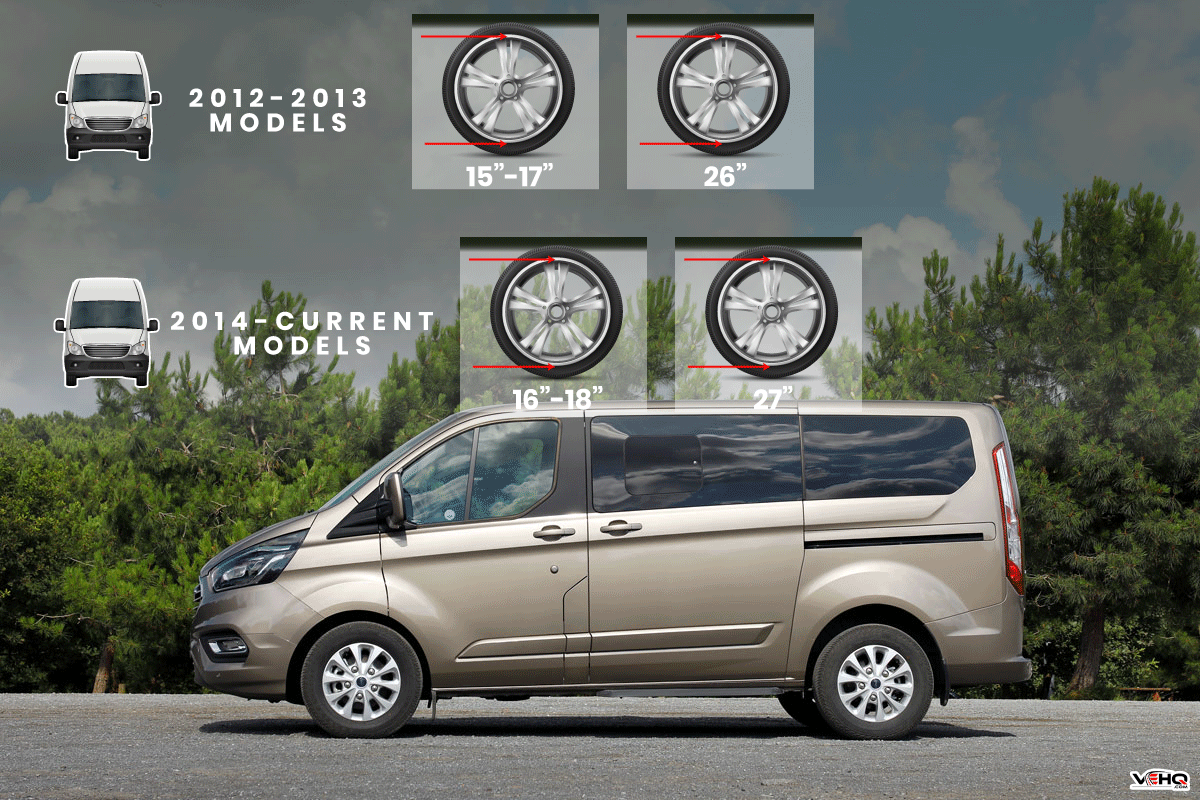
Ford Transit Connect Wheels
Although the Ford Transit Connect made its debut in 2002, the compact van only reached the American market in 2009. As the compact version of the Transit - one of America's most popular full-size vans - the Transit Connect offered customers a passenger or cargo hauler in a smaller body format.
Until 2013, the Transit Connect came with standard 15" x 6" wheels (15-inch diameter and 6-inch width) wrapped in 25.5-inch tires. With the introduction of the Titanium trim in 2014, Ford also decided to offer two wider and larger wheel options - 16" x 6.5" and 17" x 6.5" rims. From 2014 to 2018, the Transit Connect's stock tires still hovered at approximately 25.5 inches.
From 2019 to present, Ford has discontinued the largest 17" x 6.5" wheels. Current models have stock 16" x 6.5" rims paired with either 25.3-inch or 25.7-inch tires.
Transit Connect 18 Wheels
Theoretically, you can fit larger and slightly wider wheels on the Ford Transit Connect as long as the tires that you pair with them will clear the wheel well with no rubbing, even with full turns or moderate bumps. However, we recommend upsizing the wheels only by a maximum of two inches to maintain the van's cargo or passenger-hauling capability.
For Transit Connects until the 2013 model year, you can fit wheels with diameters up to 17 inches and widths of up to 6.5 inches. For 2014 and later models, you may use wheels between 16 and 18 inches in diameter and with widths between 6.5 to 7.5 inches.
On the other hand, downsizing the wheels is not an option for Transit Connect. Due to the van's payload capacity, Ford designed the Transit Connect with a braking system to ensure that the van has enough stopping power even when fully loaded.
A large brake rotor disc is part of this system. For the current Transit Connect models, the 16" wheels have just enough clearance to fit over the brake rotor discs and calipers. Check out this video and jump to 1:38 on the time slider to see what we mean about the brakes and the wheels.
Can You Put Bigger Tires On Ford Transit Connect?
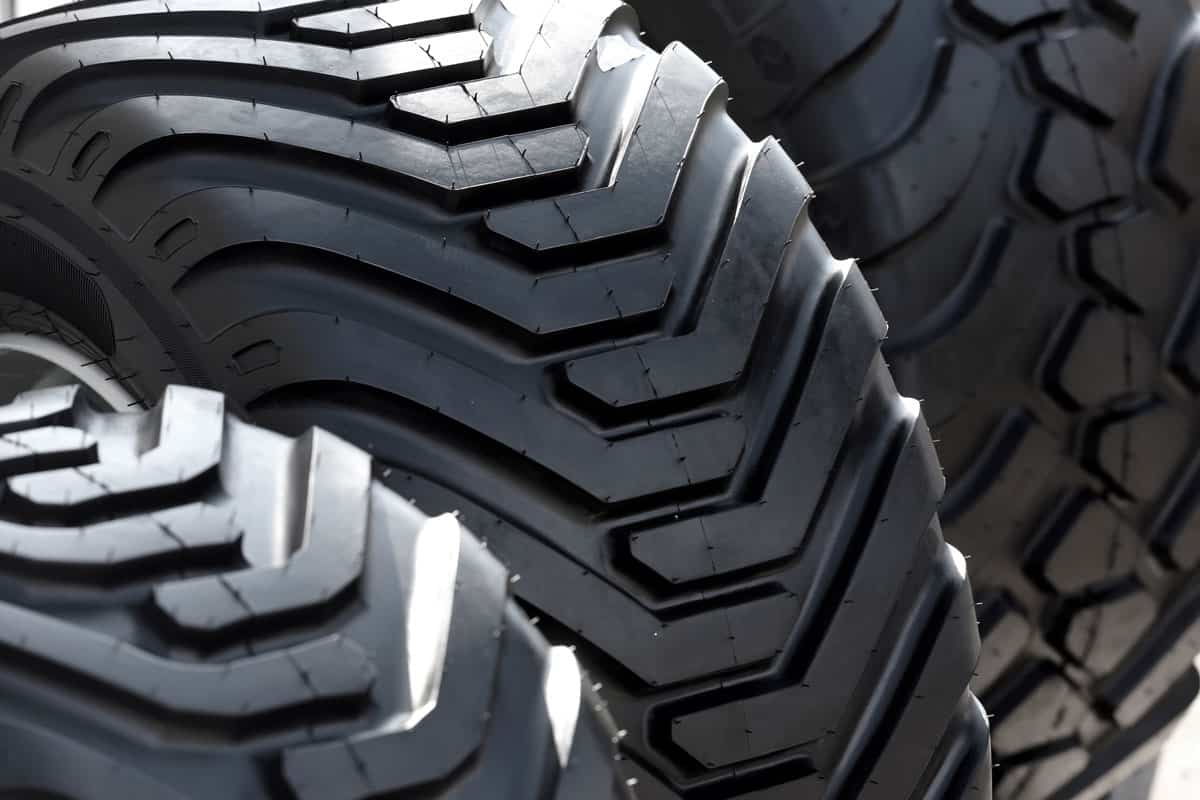
If you change your Ford Transit Connect's wheel size, then you have no choice but to pair them with different tires to accommodate the new rim diameter. Fortunately, the Transit Connect still has some wheel well clearance to spare for a few tire size options.
2012 to 2013 Ford Transit Connect Tire Sizes
The 2012 and 2013 Transit Connect models came standard with the following tire sizes.
- 195/65/R15 - 25 inches overall diameter, 7.7 inches width, 5 inches sidewall height
- 205/65/R15 - 25.5 inches overall diameter, 8.1 inches width, 5.2 inches sidewall height
If you wish to upsize your tires, then we only recommend doing so moderately. Here are some possible tire sizes that can fit on 15 to 17-inch wheels.
- 215/65/R15 - 26 inches overall diameter, 8.5 inches width, 5.5 inches sidewall height
- 215/55/R16 - 25.3 inches overall diameter, 8.5 inches width, 4.7 inches sidewall height
- 205/60/R16 - 25.7 inches overall diameter, 8.1 inches width, 4.8 inches sidewall height
- 205/55/R17 - 25.9 inches overall diameter, 8.1 inches width, 4.4 inches sidewall height
- 215/50/R17 - 25.5 inches overall diameter, 8.5 inches width, 4.2 inches sidewall height
2012 to 2013 Ford Transit Connect Tire Sizes
The 2014 to 2019 Transit Connect models also offered two different tire sizes, but this time with two different wheel sizes as well.
- 215/55/R16 - 25.3 inches overall diameter, 8.5 inches width, 4.7 inches sidewall height
- 215/50/R17 - 25.5 inches overall diameter, 8.5 inches width, 4.2 inches sidewall height
Based on actual testimonies of Ford Transit owners, you can fit 27-inch tires on the van with no suspension modification or fender trimming needed. Here are the possible tire sizes on 16, 17, and 18-inch wheels.
- 215/65/R16 - 27 inches overall diameter, 8.5 inches width, 5.5 inches sidewall height
- 215/60/R17 - 27.2 inches overall diameter, 8.5 inches width, 5.1 inches sidewall height
- 215/55/R18 - 27.3 inches overall diameter, 8.5 inches width, 4.7 inches sidewall height
Although tire manufacturers print tire size specifications on the sidewalls, we recommend that you take actual measurements of the tire itself. Some tires do not follow their published sizes exactly.
How Do You Read A Tire Code?
As mentioned earlier, tire manufacturers print their products' size specifications on the tire sidewalls. However, not everyone can decipher these codes easily. For example, let's use one of the Ford Transit Connect's stock tire sizes: 215/55/R16.
- 215 is the tire's width in millimeters
- 55 is the tire's aspect ratio, expressed as a percentage
- R16 means that the tire uses radial construction and should fit perfectly on a 16-inch wheel or rim
Again, not all tire manufacturers produce tires with the exact same measurements as they publish. Actual tire sizes may deviate by several millimeters between different manufacturers. moreover, aggressive tread patterns can make a tire bigger than others of the same published sizes.
To ensure that your new tires will fit in your vehicle's wheel well, you may need to ascertain the published sizes yourself.
What Is Overall Diameter Of A Tire?
A tire's overall diameter represents the distance between two opposite points on the tire's outermost circumference.
During overall diameter measurement, the tire should be properly mounted on its specific rim size and inflated to the manufacturer-recommended pressure.
Moreover, the tire should be set on level ground and should not bear any load, so it should not be mounted on the vehicle during measurement.
How Do You Determine Tire Tread Width?
Tire width or tread width represents the distance from one sidewall to the other.
During tread width measurement, ensure that your measuring device (e.g. tape measure) runs perpendicular to the tire's vertical axis.
What Is The Aspect Ratio Meaning?
The tire's aspect ratio pertains to the "height" of the tire wall in relation to the tire's tread width.
We measure tire height from the rim's outermost circumference to a corresponding outermost point on the tire's tread. In tire experts' jargon, tire height refers to the tire sidewall's circumferential width.
By dividing the tire's sidewall height by its width, you can get the tire's aspect ratio. Based on one of the Transit Connect tires' aspect ratio of 55, we understand that the tire's height is 55% of its tread width.
Is There A Benefit To Larger Tires?
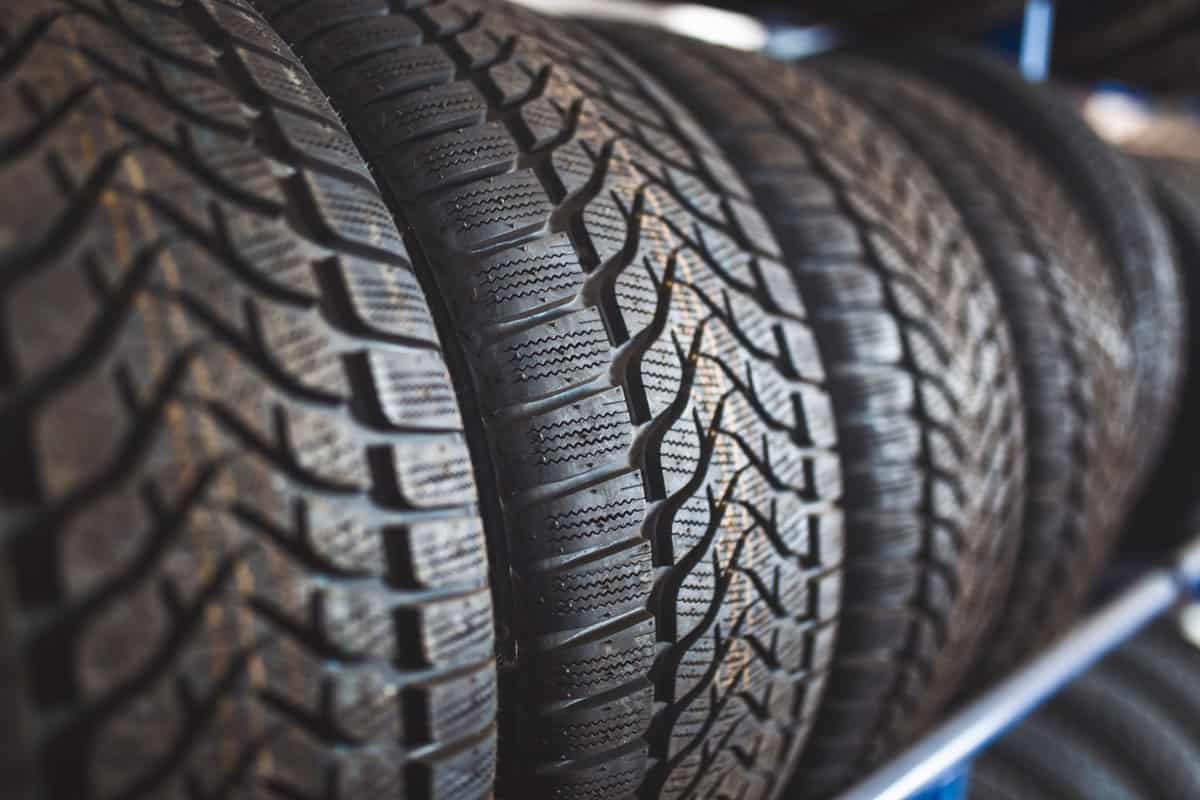
Getting bigger tires is one of the easiest and most visually-rewarding ways to customize a vehicle. Before upsizing your tires, however, you should know that the process has both benefits and drawbacks.
Some vehicle owners who choose to upsize their tires do so to make their rides look more appealing. Some more practical owners also upsize their tires to improve their vehicle's handling or performance, especially for unfriendly terrains or inclement weather.
Higher Ground Clearance
Even without modifying a vehicle's suspension system and rims, your vehicle can get a ground clearance boost simply through taller tires. In addition to increased ground clearance, you will automatically give your vehicle additional capabilities to drive over urban or uneven terrain.
Here are some examples:
- Steeper approach angle
- Steeper departure angles
- Deeper water wading or fording capacity
Better Traction
Upsizing tires can mean going for taller tires, wider tires, or both. Wider tires, in particular, have larger contact patches that increase your vehicle's traction on the road. Because of the increased traction, you can have better vehicle control or handling.
With better handling and traction, your vehicle can manage through wet, sandy, snowy, or muddy terrain much better than if you fitted it with narrower tires. Moreover, wider tires will also improve your vehicle's stability during highway cruising or even in fast corners or curves.
Is It Bad To Have Bigger Tires?
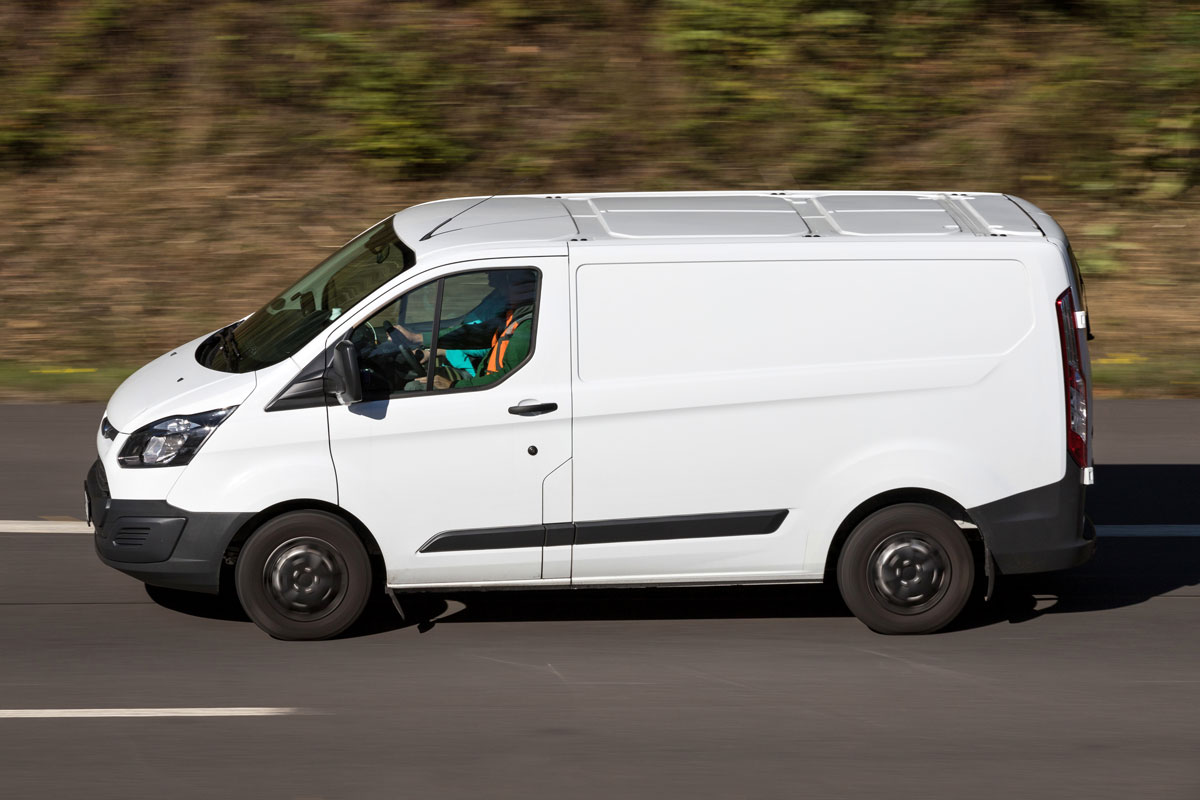
Although bigger tires offer several advantages, they also come with some drawbacks. Here are a few disadvantages:
- Higher maintenance and replacement cost - bigger tires generally cost more
- Slower acceleration - wider tires create more rolling resistance
- Heavier steering - the wider tires' larger contact patches make steering slightly more difficult, especially during dry steering
- Decreased fuel efficiency - bigger tires are heavier and will lead to more fuel consumption
- Inaccurate speedometer - larger-diameter tires travel farther with every revolution than smaller tires do. This leads to inaccurate speed readings.
To minimize the drawbacks of bigger tires, many automotive experts recommend upsizing only up to 3% of the overall size of the vehicle's original or stock tires.
How Much Does A Ford Transit Connect Cost?
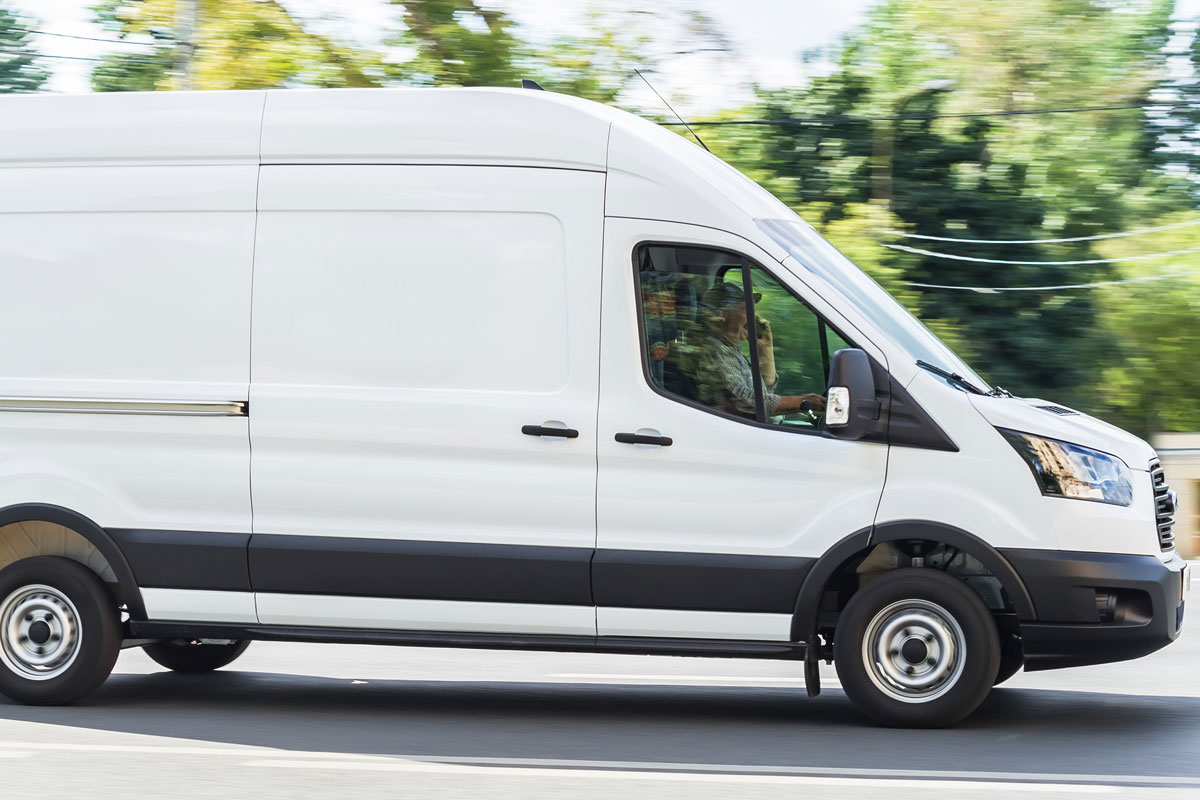
If you're looking for a compact van for your family or your small business needs, then the Ford Transit Connect may be worth checking out. Here are the starting prices of the 2023 Transit Connect's different trims.
- XL Passenger Wagon - $ 31,860
- XLT Passenger Wagon - $ 33,975
- Titanium Passenger Wagon - $ 36,060
- XL Cargo Van - $ 29,365
- XLT Cargo Van - $ 31,540
These starting prices are correct as of January 2023.
Wrapping Up
For 2nd-generation Ford Transit Connects up to the 2013 model year, you may fit up to 17-inch wheels wrapped in 26-inch tires. 2014 and later Transit Connect models can take up to 18-inch wheels paired with 27-inch tires.
Thank you very much for reading. We hope we were able to help you find the best wheel and tire combination to suit your usage of your Ford Transit Connect.
For more interesting reads about Ford vehicles and other automotive topics, check out these articles.
How To Tell If Tires Have TPMS Installed
